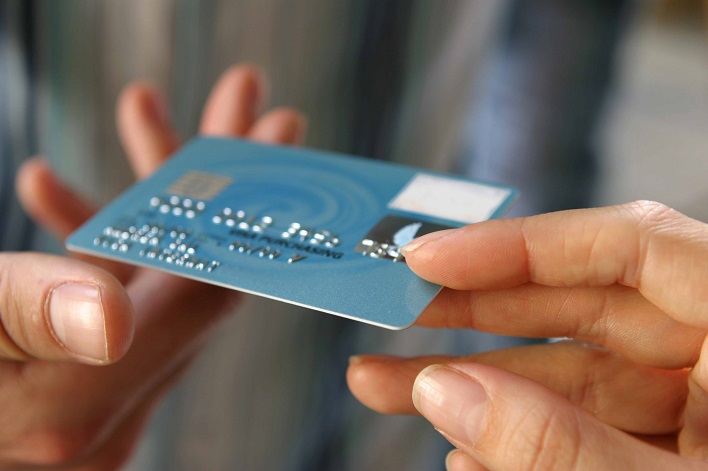EMV cards greatly reduce fraud risk, but only 40 percent of retailers welcome them.
Despite a massive rollout last year, only about 40 percent of U.S. merchants have started using EMV credit card technology.
EMV cards are equipped with a computer chip, unlike old-style credit cards that only have a black magnetic stripe running down the back. As a result, EMV cards are harder for fraudsters to rip off.
Countries that use EMV technology have seen a significant decrease in counterfeit fraud. In the United Kingdom, for example, card fraud plummeted 70 percent between 2005 and 2013, according to Aite Group.
The U.S. credit card industry has decided to make EMV cards the standard here in America, too. To date, more than 400 million EMV cards have been issued in the United States.
To make adopting EMV technology more appealing—or not adopting the technology more costly—the industry also has shifted the liability for fraudulent payments. Since October 2015, whichever entity—either the issuer of the card or the business accepting the card—has the lesser capability to use EMV chip cards will be liable for counterfeit fraud transactions.
For example, if a store is not set up with EMV equipment and an EMV chip card is presented for a sale, the business accepting the card is assuming the risk of the counterfeit transaction, not the card issuer.
So with all those incentives, why aren’t more businesses adopting EMV? Here are the four main reasons.
Cost
The National Retail Federation estimates that implementing EMV costs retailers an average of $2,000—or $35 billion nationwide. That figure includes the equipment, software and training expenses that come with the new technology. In some cases, businesses have simply deferred the cost if they don’t believe they have exposure to fraud.
Fully compliant EMV stand-alone terminals range in cost from $300 to $350. Businesses should avoid sales groups trying to scare them into adopting higher-priced equipment.
Implementation
Even at businesses that have invested in chip-enabled terminals, consumers may still be swiping. That’s because those merchants are using point-of-sale software that hasn’t been updated to support EMV.
Most software providers should have certified EMV solutions available this year. Even better, in many cases, these
will likely include additional security features such as Point-to-Point Encryption (P2PE) and use of tokenization methods.
Businesses should inquire with their software providers to confirm timing of certified EMV solutions and costs.
Speed of Checkout
Longer transaction times have been a drawback of chip cards. Customers must insert the card into a reader and keep it there until the transaction is complete. It often takes twice as long as swiping the card would. That’s a big problem for many retailers, who need to offer speedy checkouts.
Visa announced in April the launch of Quick Chip for EMV, a technology enhancement that optimizes EMV chip card processing and speeds up checkout times. The upgrade streamlines the processing of chip card transactions to enable customers to dip and remove their EMV chip card from the terminal, typically in two seconds or less, without waiting for the transaction to be finalized. MasterCard also has announced plans to speed up transactions.
If businesses are experiencing long transaction times, they also should check their network configurations to make sure their systems aren’t part of the problem.
Effectiveness
No credit card has proved to be 100 percent secure yet. Still, the chips are a great improvement over magnetic stripes in safeguarding confidential information. MasterCard reported a 27 percent decline in counterfeit fraud at a group of large EMV-enabled retailers.
An even stronger type of chip card is the chip-and-PIN version. Not only do customers have to present a chip card during a transaction, they have to provide a PIN number.
Although these cards are widely used throughout the world, most EMV cards in the United States haven’t required a PIN.
For example, Visa lets customers provide a signature instead of a PIN number because the company wants to keep transaction times down.
This has spurred much debate between large retailers and Visa, with retailers noting that PIN-based verification would be more secure and effective. In fact, Walmart recently filed a lawsuit against Visa for allowing signatures rather than requiring PIN.
The Future Is Now
While there are situations where businesses may argue they have limited to no exposure to retail fraud, most retail business should give serious consideration to adoption.
For one thing, retailers must understand that, as EMV adoption increases, fraudsters will avoid businesses that have adopted EMV—and target those that have not.
With the industry clearly moving toward full-scale adoption of EMV, and with liability for fraud shifting to the merchant, the future of chip-enabled cards is now.

